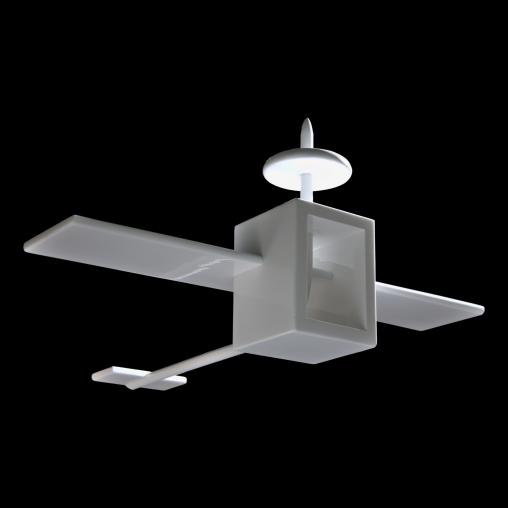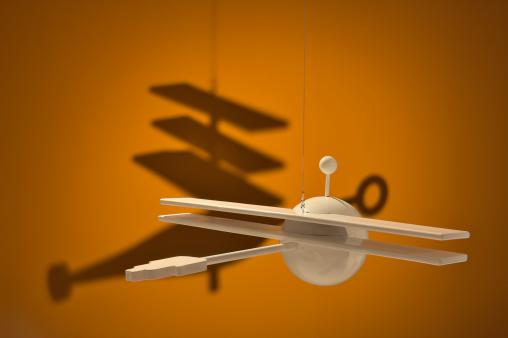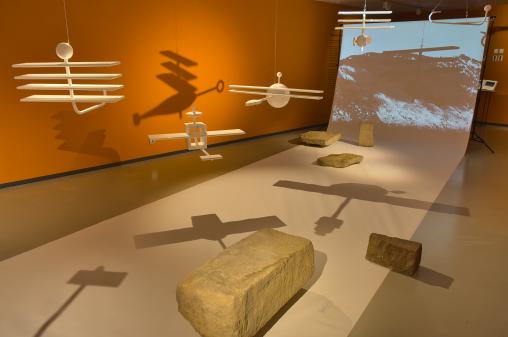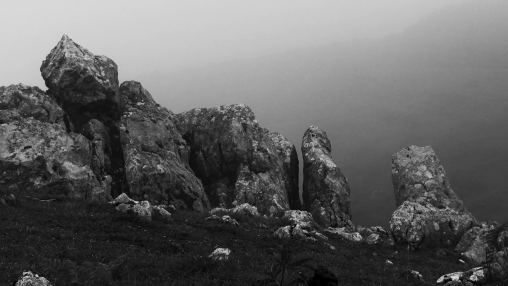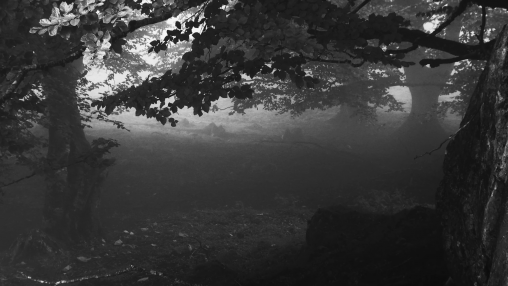False Flag
The point of departure for this work is ‘Le Drapeau Noir’ (Black Flag), a relatively unknown painting by the Belgian surrealist René Magritte, which the artists came across during their research on art related to the Spanish Civil War. Produced in 1937, the canvas is said to have been inspired by the bombing of Gernika. It features a number of futuristic airplanes ominously hanging above the horizon. Like props from a science fiction movie, they seem to foreshadow the drones and satellites that circle our planet today, pointing towards a fundamental aspect of this historical moment: the way technological progress in aviation would forever alter humankind’s relation to territory.
Jaio and van Gorkum have manufactured three-dimensional models of these airplanes.
The objects are shown with a video of the Basque mountainous landscape and a soundtrack where different voices, as an inaccurate echo, enumerate body parts represented in the painting ‘Guernica’ by Picasso.
Jaio and van Gorkum embrace the incongruencies and anachronisms of Magritte’s painting, which they consider to be a deviation from the historical canon in which the ‘Guernica’ of Picasso's plays a central role. From the margins, Magritte’s flying machines serve as vehicles for an unorthodox reflection on modernity, and on the role art plays in the collective imagination of historical memory.
'False Flag' has been made thanks to ANTespacio, with the support of Eremuak, Bilbao Aurrera and Mondriaan Fund.
